

| Rearing Cryptocephalus labiatus in captivity | ||
| C. labiatus
is another of the Cryptocephalus we are rearing
in captivity at the moment. Although a generally common
species found on a range of shrubs and trees, the lack of
any early life-cycle images available on the internet,
meant that it was worth rearing some stock for release at
a later date. The pot is very similar in size and shape to that produced by C. querceti, but the twists within the surface texture go in the opposite direction. The first pots were produced on May 30th 2011 and hatching occurred from June 14th onwards. |
||
| .... | ||
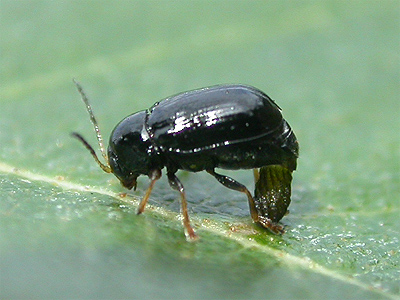 |
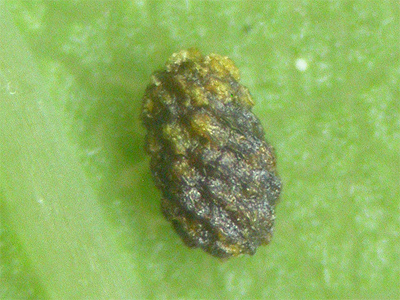 |
|
| .... | ||
| Cryptocephalus labiatus pots photographed on July 6th and now measuring approximately 2.25mm. Kept on a layer of damp sand and periodically left to dry out, growth is quite fast as would be expected with the one year life cycle of C. labiatus. We sometimes varied the diet during these early days and the larvae fed well on Birch, Hazel and Sallow. The pot construction and development is remarkably similar to that of C. coryli at this stage. The photographs below show the series of slits on the underside of the pot, and the extensions to the front of the pot made by the larva as it grows. The different colours are assumed to be from the different foodplants given to the larvae. | ||
| .... | ||
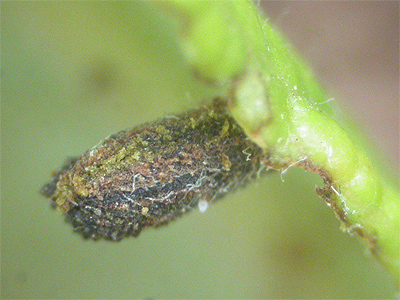 |
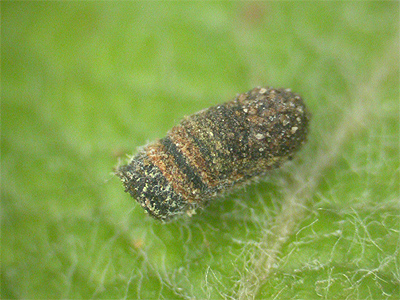 |
|
| .... | ||
| Photographed on July 17th, the larvae are continuing to grow well, now maintained on a diet of fresh Sallow leaves. The upper two photographs show how the pots (now 2.75mm long) have been lengthened since the last update. Virtually the whole texture of the C. labiatus pot has now changed, but the remnants of the pots originally created by the female during egg laying, is still just visible at the rear end. | ||
| .... | ||
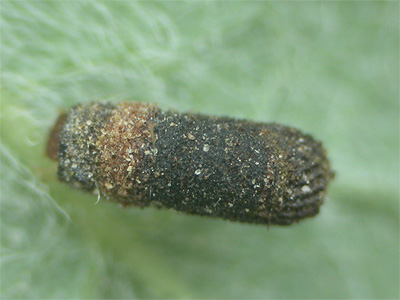 |
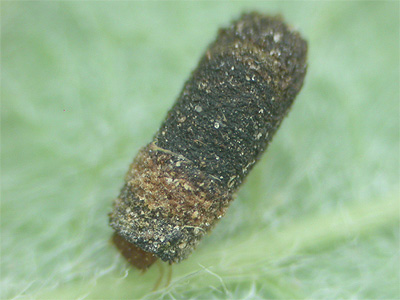 |
|
| .... | ||
| Side and above views of another larval pot, show that of the Cryptocephalus species currently being reared in captivity, the pot shape and texture of C. labiatus, is surpsrisingly similar to that of Cryptocephalus coryli, yet the pot entrance is relatively simple - comparable with both C. querceti and C. moraei. | ||
| .... | ||
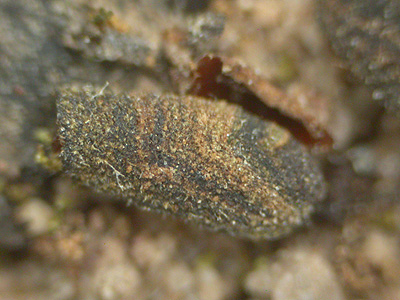 |
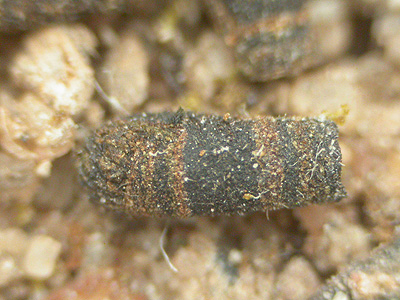 |
|
| .... | ||
| Full grown Cryptocephalus labiatus larvae, found at Clipstone Old Quarter in late February 2021. A number of larvae were found ascending a burnt ancient Oak, surrounded by Birch scrub and taken home to be reared through. The larvae all pupated within the space of around a week, with only very limited feeding recorded before the pots were secured to bark, prior to pupation. | ||
| .... | ||
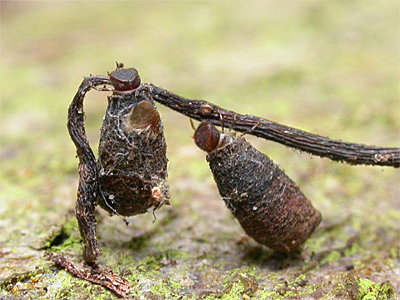 |
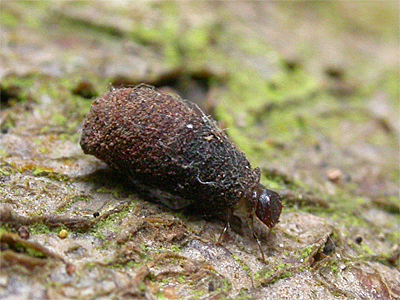 |
|
| .... | ||
| Side and above views of full grown larva and pot, photographed in early March 2021. The lengths of all larval pots, measured between 5mm and 6mm in length. Hatching commenced almost three weeks after cessation of activity. | ||
| .... | ||
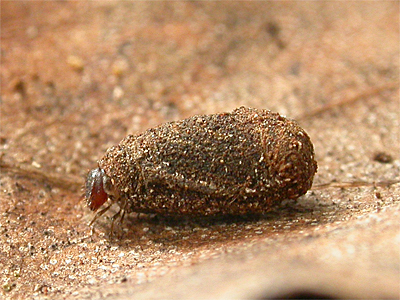 |
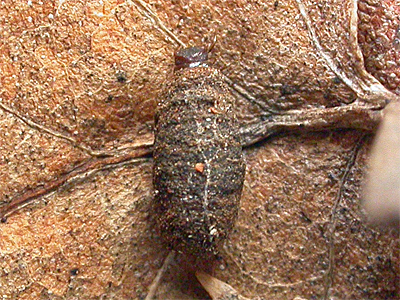 |
|